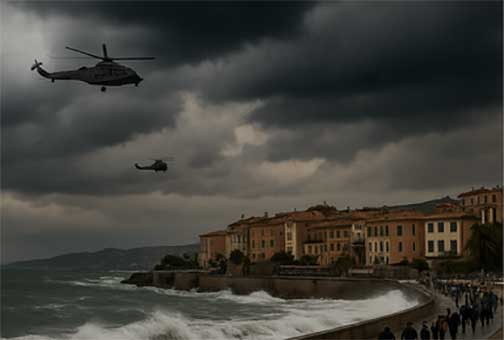In a distressing survey conducted across the United States, it has been revealed that school crossing guards—who tirelessly work to protect children from oncoming traffic—are facing unimaginable risks. A significant investigation by The Associated Press and Cox Media Group has uncovered that, over the last decade, hundreds of crossing guards, many elderly, have suffered serious injuries after being struck by vehicles, while dozens have tragically died.
Anthony Taylor, a crossing guard from Indianapolis, recounted a horrific experience where he was hit while trying to safely guide a young student across a busy street. In an instant, he fell victim to what he describes as a fleeting moment; “Next thing, it was boom, lights out,” he says, reflecting on the moment of impact.
Despite sustaining a fractured pelvis and multiple other injuries requiring surgery, Taylor exemplifies resilience, returning to work after his rehabilitation process.
This issue, however, is not isolated. Across the nation, many crossing guards report daily close calls with distracted or hurried drivers, some of whom evade consequences even after causing harm. A meticulous compilation of data indicated that about 230 crossing guards were struck by vehicles between 2008 and 2023, with nearly 30 fatalities recorded.
One significant insight from the investigation highlights the severe lack of tracking measures: currently, only two states—New Jersey and Massachusetts—actively collect data on injuries and fatalities among crossing guards.
The statistics illustrate a callous reality; drivers who hit crossing guards are rarely held accountable. Almost half of the investigated collisions recorded only traffic citations, while many resulted in no penalties at all. These findings emphasize the urgent need for improved safety measures to protect these vital community figures.
As custodians of children’s safety on their daily school routes, crossing guards deserve acknowledgment and more substantial protections to perform their duties securely. Advocates and community members are urging motorists to exhibit more awareness and respect for crossing guards' presence on busy streets.
“It’s a huge responsibility to step out in front of a vehicle,” said Dacia Maisonave, a trainer for crossing guards. This poignant statement encapsulates the inherent dangers that crossing guards face daily—battling the harsh elements of weather and an increasingly risky driving culture.
The need for systemic change is clear. Many crossing guards are just volunteers or retirees, often without benefits, despite the critical nature of their work. Ensuring their safety is essential not just for their protection but also for the continued safeguarding of children navigating through traffic.
For individuals like Anthony Taylor, their job is more than just a role—it's a dedication to fostering safe environments for future generations. “I like what I do, and I enjoy being around the public,” he states, reaffirming his commitment to the role despite the risks involved. Such determination echoes the sentiments of many crossing guards nationwide, as they continue to stand on the front lines of traffic safety.























